Following the start of sales of new motherboards based on the X870 and X870E chipsets, AMD made a number of other important announcements. They concern updates to the AGESA libraries for the Socket AM5 platform, designed to improve the performance of Ryzen 9000 processors.
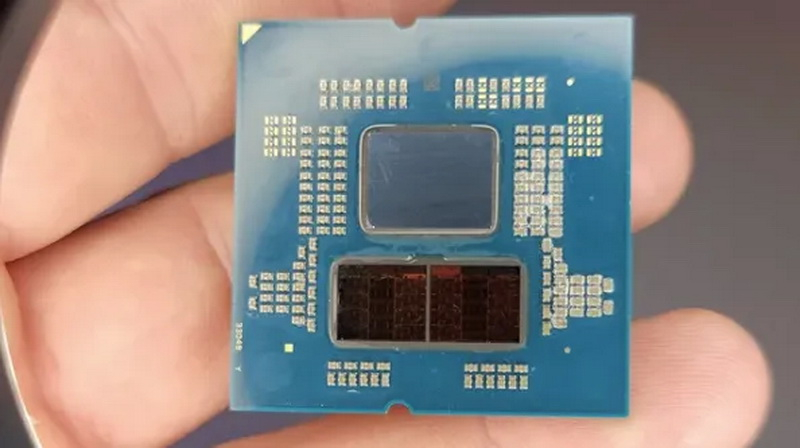
Previously, some motherboard manufacturers have released BIOS versions that give the 6-core Ryzen 5 9600X and 8-core Ryzen 7 9700X support for a nominal TDP of 105 W. Let us recall that these chips were presented and went on sale with a nominal TDP of 65 W. Reviews of these processors showed that AMD needlessly “strangled” these chips in terms of power consumption, since because of this they demonstrated an almost complete lack of performance gain relative to their predecessors. AMD today announced that it has released a new version of the AGESA BIOS libraries 1.2.0.2, which officially supports 105W TDP for these processors. However, this is not considered overclocking and is fully covered by the manufacturer’s warranty.
AMD said in a statement: “Boost your performance with new 105W cTDP settings for the Ryzen 7 9700X and Ryzen 5 9600X,” the company said in a statement. “With a standard 65W TDP, our vision for the Ryzen 9600X and 9700X was all about power-efficient performance. But we know and hear that some of you will always crave more power and more speed. With the new BIOS update 1.2.0.2, you can run the Ryzen 9600X and 9700X at 105W TDP without voiding your warranty. Just enable 105W cTDP in BIOS and you’re good to go! These processors have been tested at 105W TDP since their release, so you won’t be pushing past their design limits using these settings. This TPD boost is especially useful for multi-threaded workloads, but you may see some improvements in less resource-intensive applications as well. Remember that with great power comes great responsibility: make sure you have the right cooling solution to cope with the higher thermal limit that 105W brings.”
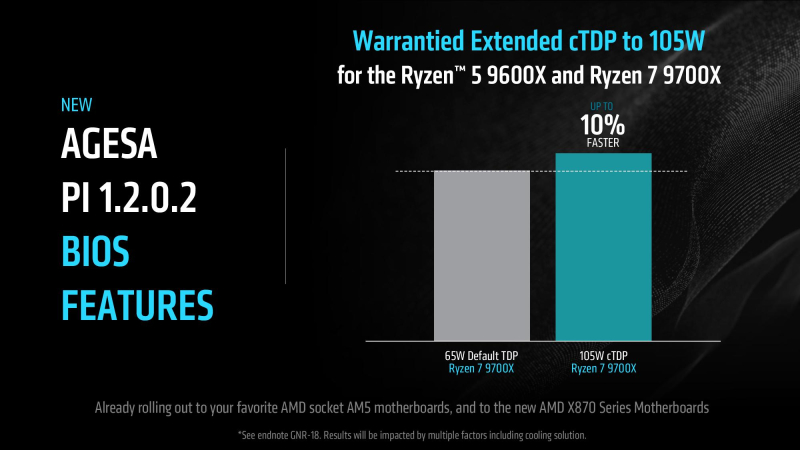
Source of images here and below: AMD
This setting is available on all AMD 800 series motherboards and some AMD 600 series motherboards. AMD claims that increasing the nominal TDP limit results in up to a 10% increase in performance.
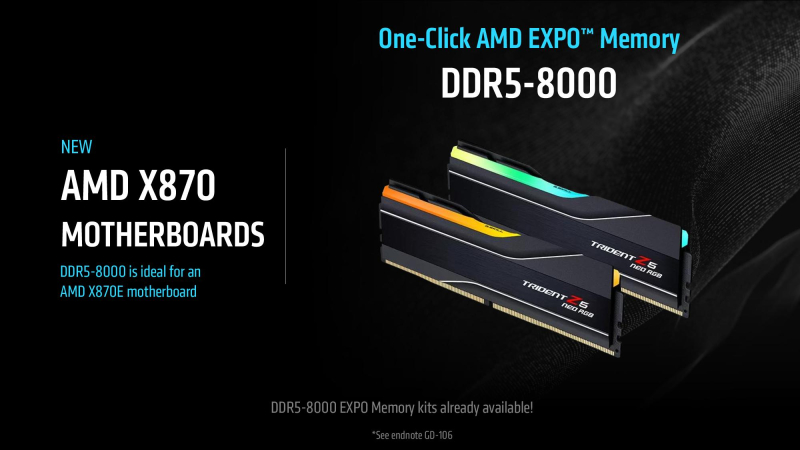
The company also announced three other important news. One is related to support for overclockable RAM through AMD EXPO overclocking profiles. The new AMD X870 and X870E chipset boards are designed to support up to 8000 MHz RAM speeds that these overclocking profiles offer. Boards based on the AMD X670E chipset received the same support. Independent tests show that Ryzen 8000 and Ryzen 9000 processors can actually work with faster memory, up to 9000 MHz.
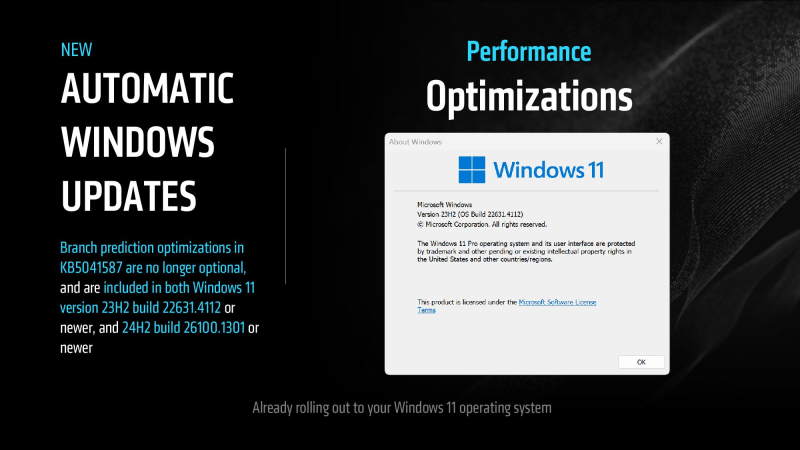
Secondly, the company recalled that updates were released for Windows 11 23H2 and 24H2 containing optimizations for Zen 5 branch prediction algorithms. Previously, they were only available in preliminary builds of Windows. These optimizations are designed to improve the performance of systems based on AMD processors. According to Tom’s Hardware, these optimizations increase gaming performance by 2.3% to 4.4% on average (based on 19 gaming tests). AMD advises checking your system for the KB5041587 update in Windows Update – it contains the necessary optimizations.
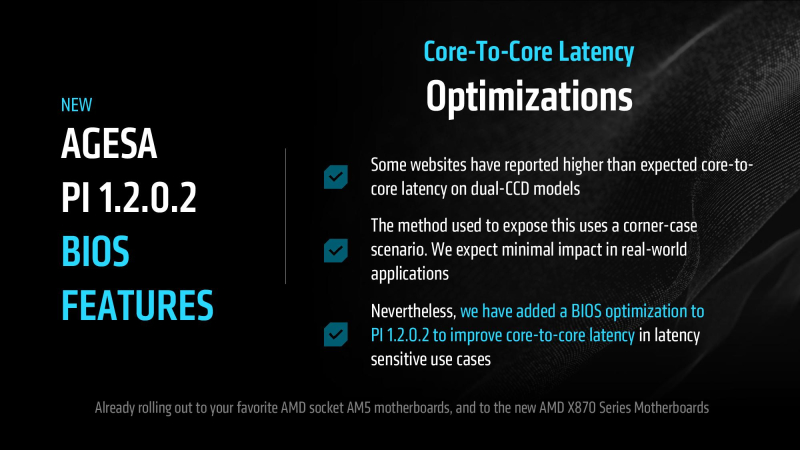
Thirdly, the new AGESA update also contains fixes for latency in signal transmission between processor cores in older Ryzen 9000 models equipped with two CCD chiplets. Enthusiasts received access to these optimizations a few weeks ago. According to Tom’s Hardware, in synthetic tests these optimizations reduce inter-core latency by up to 58% (from 180 ns to 75 ns). But in practice, there is no significant performance benefit from this. However, AMD claims that the benefits of these optimizations are present in the games Metro, Starfield and Borderlands 3, as well as in the 3DMark Timespy test.